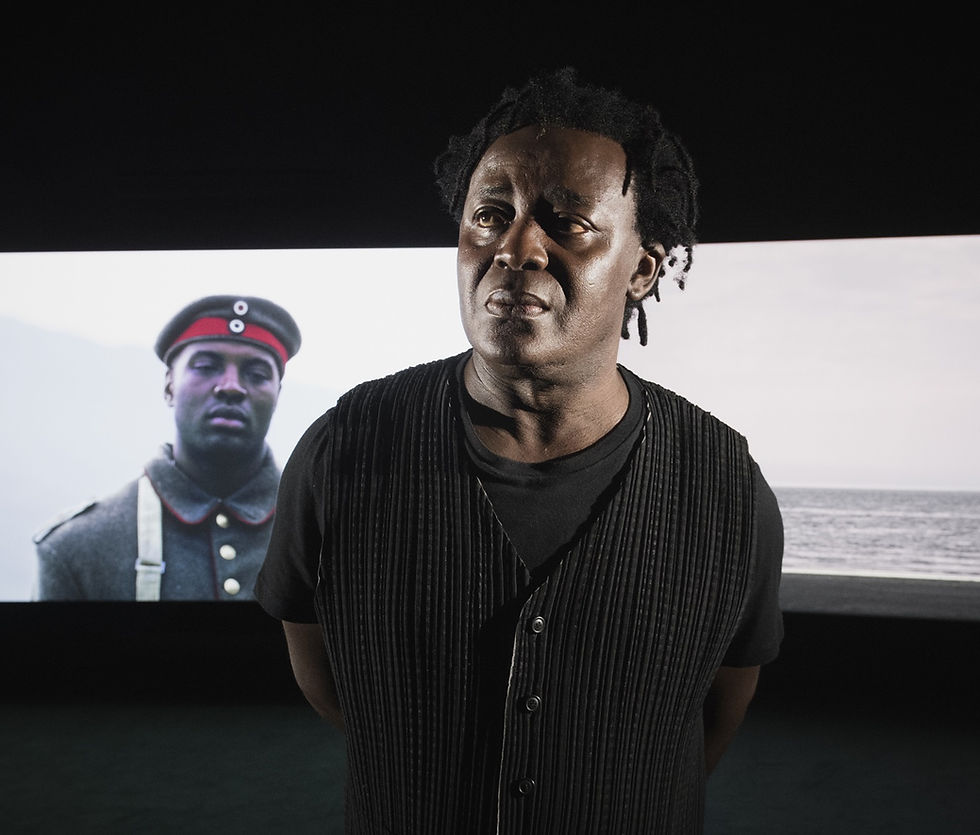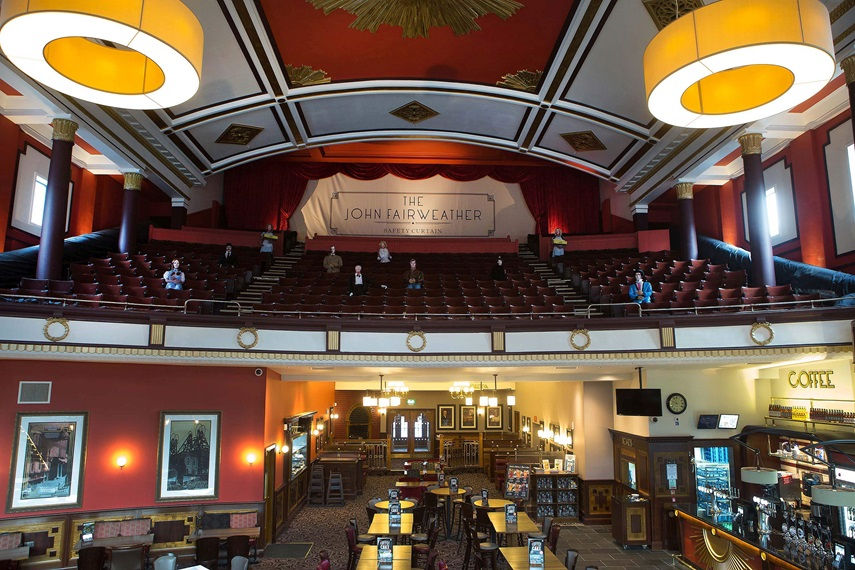Mimesis: African Soldier
- Walking With Brian
- Jun 10
- 5 min read
Updated: Jun 23
The Second World War is recognised as a truly physical global conflict, with fierce fighting occurring on several continents, plus the seas and airspace in between. The actual theatres of the Great War of 1914 to 1918 were largely European, but the combatants were drawn from across the globe. A large number of nations were involved and the struggle was certainly a world event in terms of politics and military personnel. From the British perspective, one factor that is regularly overlooked is the contribution made by colonial troops from the then vast empire.

As its main special exhibition, the Glasgow Gallery of Modern Art is currently showing a film that attempts to redress the balance. Five screenings are scheduled each day and you can drop in and out whenever you wish. Mimesis: African Soldier reflects on the experiences of those who came from the colonies to fight for the motherland, and in many cases die. They played many roles: soldiers (both professional and conscripted), labourers, factory and field workers, trench and railway builders, lumberjacks, mechanics, clerks, nurses, drivers, plus myriad other positions vital to the war effort. The 2018 movie is displayed across three screens and was directed by Sir John Akomfrah. The 10-month gallery run marks the first Scottish showing of this hard-hitting masterpiece. It was previously part Making a New World at the London Imperial War Museum - a season of exhibitions, installations and experiences exploring how the First World War has shaped the society we live in today. Blending archive material and newly shot footage recorded in locations around the world, we learn about the contributions and sacrifices made by these brave men. Akomfrah says there is a moral obligation to remember those who gave their lives and to acknowledge that people from across Britain’s global empire were involved. As the director puts it, "There is a way in which we talk about this country now, which assumes it has always been this fortress alone in the sea, doing its own fighting. But that's not true. Absolutely untrue. And to remind people of that, it’s not about causing trouble or making mischief, but simply stating some of the historical facts to allow people to understand why we are where we are now". Akomfrah lives and works in London as an artist and filmmaker. He explores personal and collective histories, cultural identity, and the experiences of Black British and global migrant diasporas throughout his work. His non-linear approach raises questions about how the past affects present tensions, racism and inequality in society. This all sounded very interesting and I took the bus through to Glasgow on a holiday Monday. The film lasts 73 minutes and I wanted to catch the first showing at 10.20 and watch the whole thing. The gallery is centrally located, just off George Square. I had over an hour to kill upon arrival and settled into the cavernous Counting House - a Wetherspoons pub located within a grand former Bank of Scotland building. Many original features have been retained, including the beautiful glass ceiling dome. I ordered breakfast with unlimited coffee refills and admired the surrounding architecture. This place can be very busy at peak times and an early-morning visit is an ideal time to appreciate the interior, perhaps grabbing a window table in one of the side rooms.

I have written about the Modern Art Gallery in a previous post. Today I mad a beeline for the film showing and found a central spot on one of the padded bench seats. No human dialogue is featured but the sounds of war ring out during the action. The three screens sometimes displayed alternative angles of the same scene, and at other times the backdrops were completely different. It added to the confusing atmosphere of war, and often amounted to a sensory overload, but in a most appropriate way. The movie did not shirk from showing the brutal conditions of trench warfare. This was tempered with tales of comradeship and touching moments of humanity. Sometimes the film would cut to shots of water flowing over scattered photographs of individual combatants. My interpretation of this dramatic effect was that we were witnessing the gradual erasing of both family memories and society's recognition. I couldn't helping thinking that launching an maintaining a conflict of this scale must have required an unfathomable amount of expertise and coordination. Armies cannot progress without an elaborate supply chain and detailed planning. Logistical problems were tackled head on by the best brains in the business. A massive amount of labour was required to keep the show on the road. Yet within peacetime society, the same problems dog us over decades. That's one of many messages I too from the film. Around half of the original audience remained for the entire screening. Others wandered off, while newcomers arrived. I definitely had a better appreciation of the role played by non-British personnel. The Empire mobilised around two and a half million soldiers, with many more men occupying vital support roles. I can only assume a similar situation occurred within other colonial "superpowers" such as France. Akomfrah's work also instils a sense of anger that the tragic events of the Great War are often viewed through a white-only lens. I would heartily recommend the film to anyone with an interest in military history, or simply the 20th century. It's not a pretty watch, but that is entirely in keeping with the subject matter. Certainly very affecting. I had intended to check out other parts of the museum but quickly scotched that idea. I just wouldn't have been able to concentrate in any meaningful manner.

Having already visited one Wetherspoons pub within a historic building, I decided to double down and make the short train journey to the outlying town of Cambuslang. I picked up lunch from Greggs on the bustling High Street and wandered along to the John Fairweather - a tasteful cinema conversion at the far end of the main drag. I had previously stopped here a couple of times while doing the River Clyde Walkway and the pub is arguably my favourite 'Spoons outlet. Housed within a 1920s cinema, the establishment is named after the architect who designed the building. John Fairweather was also responsible for creating the two largest film theatres ever built in Scotland - the Green's Playhouses in Dundee and Glasgow. The interior is breathtaking. The split-level ground floor is occupied by tables and the overhanging circle seating is populated by a handful of cardboard patrons. The foyer contains an antique projector and the original ticket office. The cinema became a bingo hall in the 60s - a common theme across Scotland. Wetherspoons purchased the derelict premises and opened the bar in 2015. The company divides opinion but there's no denying the significant number of heritage buildings they have saved, that would otherwise have been left to rot. I enjoyed a couple of relaxing pints as my brain returned to an even keel.





Comments